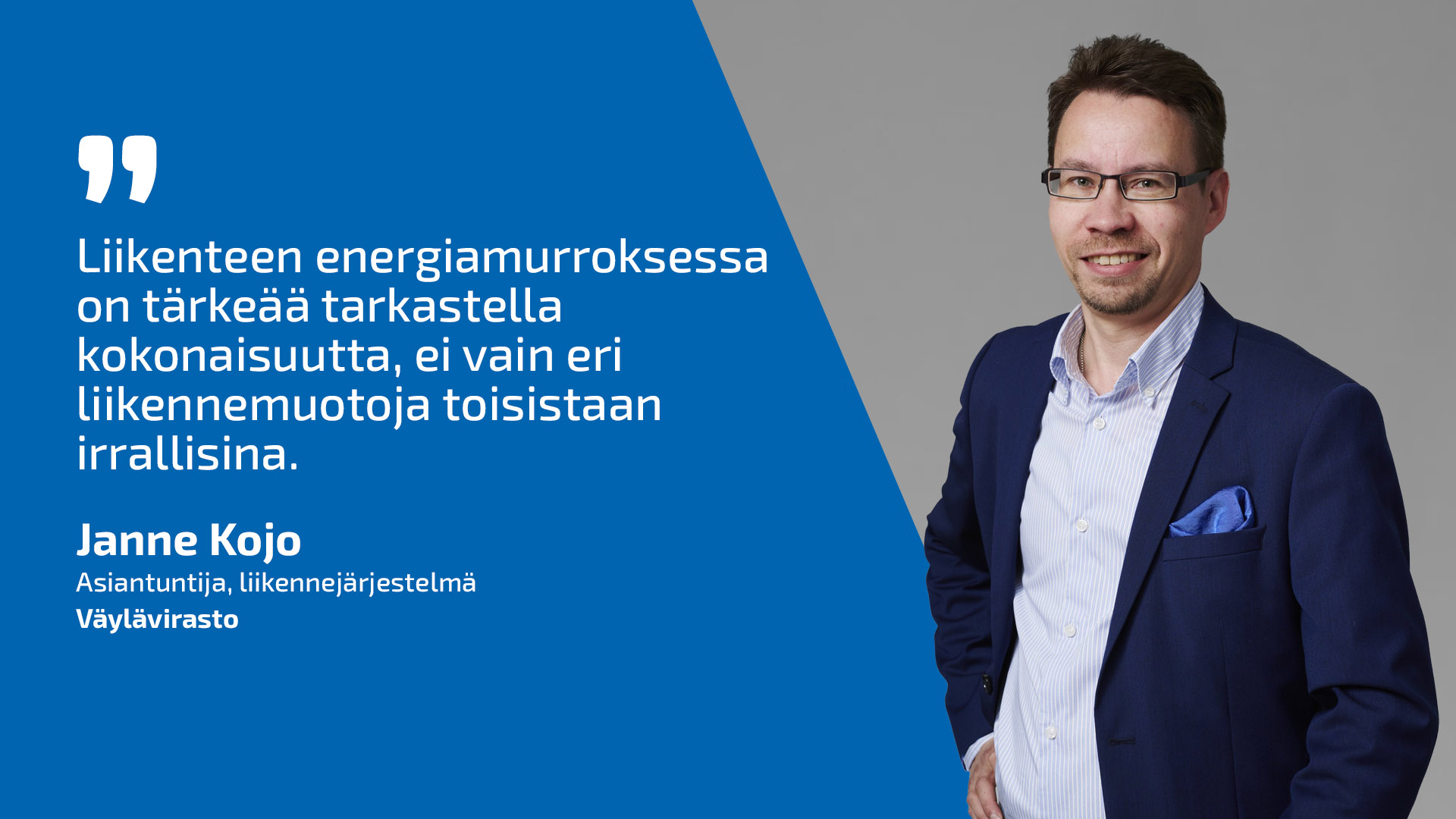Electricity is a very energy-efficient driving force when we have to move things from one place to another. Electric power allows us to move larger masses more efficiently and with less energy consumption than diesel. It is also cleaner for the environment.
The current situation on railways is already considerably better in terms of emissions than in other modes of transport, which are still mainly based on fossil fuels, even though electrification has already kicked off strongly in road traffic. Rail traffic causes less than one per cent of CO2 emissions from Finnish transport, even though railways account for nearly 20 per cent of domestic traffic. Even so, this does not mean that there is no need and potential for reducing emissions on railways.
"In Finland, the railway network has been electrified since the late 1960s and early 1970s, and approximately 60% of the railway network has already been electrified. Even so, more than 80% of freight traffic and 95% of passenger traffic are already powered by electricity. In practice the sections that have not been electrified are those with low traffic or lines that cannot be technically electrified", Kojo points out.
Even so, increasing the share of electric traction is one of the key means for reducing climate emissions from rail traffic. However, the justification of further electrification projects on the railway network in relation to the costs arising from direct benefits from electrification is becoming increasingly difficult.
Batteries and biofuels as the alternative
Battery technology also offers one viable alternative for diesel on railways. It is best suited for transport where energy consumption and distances are moderate.
"In passenger traffic, commuter rail traffic on non-electrified track sections or currently on diesel-powered railcars is one of the transport forms with the most potential for battery technology," Kojo points out.
Charging can usually be carried out at stations when a railcar's operating radius is around two hundred kilometres, and, if necessary, the operational radius could be increased with the electrification of short sections along the way for charging while driving.
However, there may also be justifications for electrification on non-electrified track sections if electrification could also open new low-emission transport corridors for cargo traffic.
Due to the large weight of cargo trains, which can weigh up to a couple of thousand tonnes, current battery technology cannot in practice replace diesel locomotives in these line sections. On the other hand, battery use could offer opportunities for zero-emissions in shunting operations in railway yards where speeds are low and transport distances are short. The electrification of railway yards in many industrial and port areas is not even possible due to the loading of wagons or other tall machinery crossing the tracks in the area.
"Bio-based renewable fuels are a necessary addition to the driving force palette in applications that cannot be electrified. The greatest such need will probably be in air transport in the future. With regard to the traffic sector's energy revolution, it is important to look at the whole, not just the different modes of transport in isolation", Kojo concludes.
Read more about alternative railway power sources, their suitability for Finland and what kinds of measures would be required to utilise them in the report prepared by the Finnish Transport Infrastructure Agency https://www.doria.fi/handle/10024/189112

